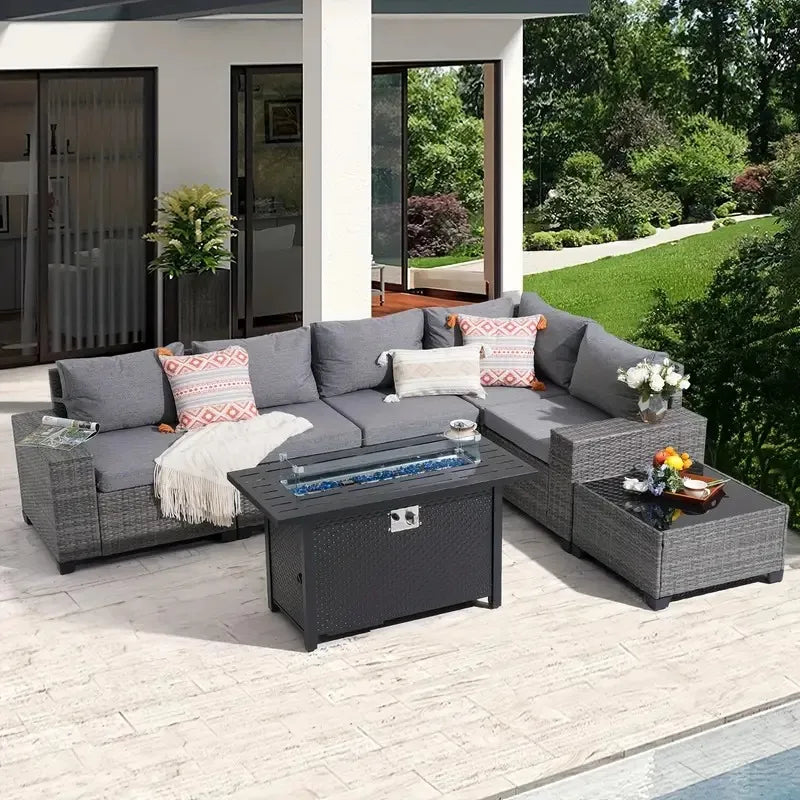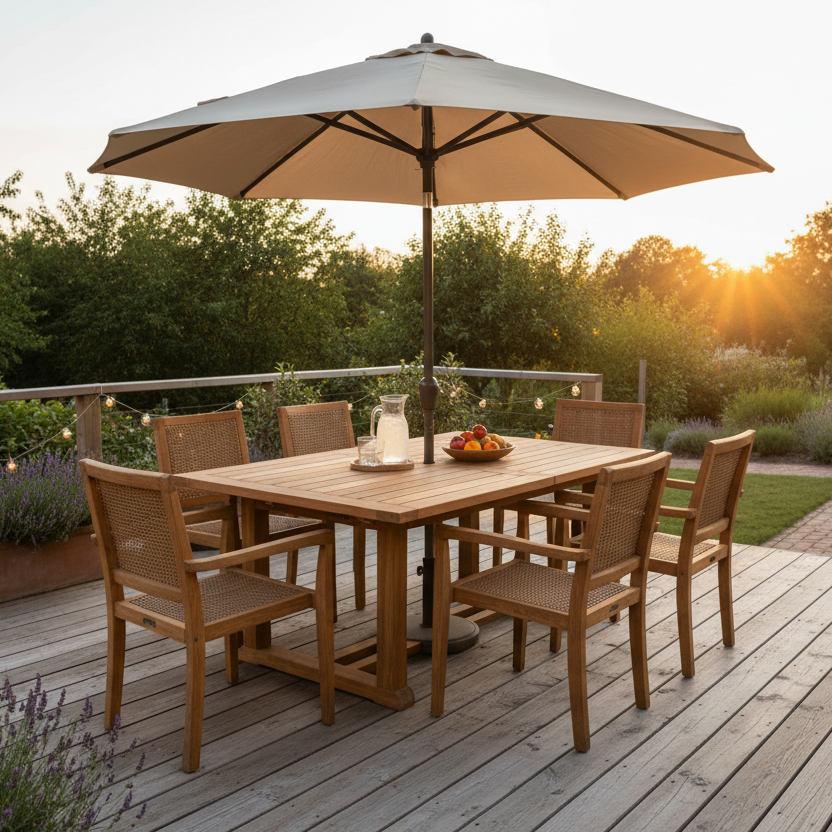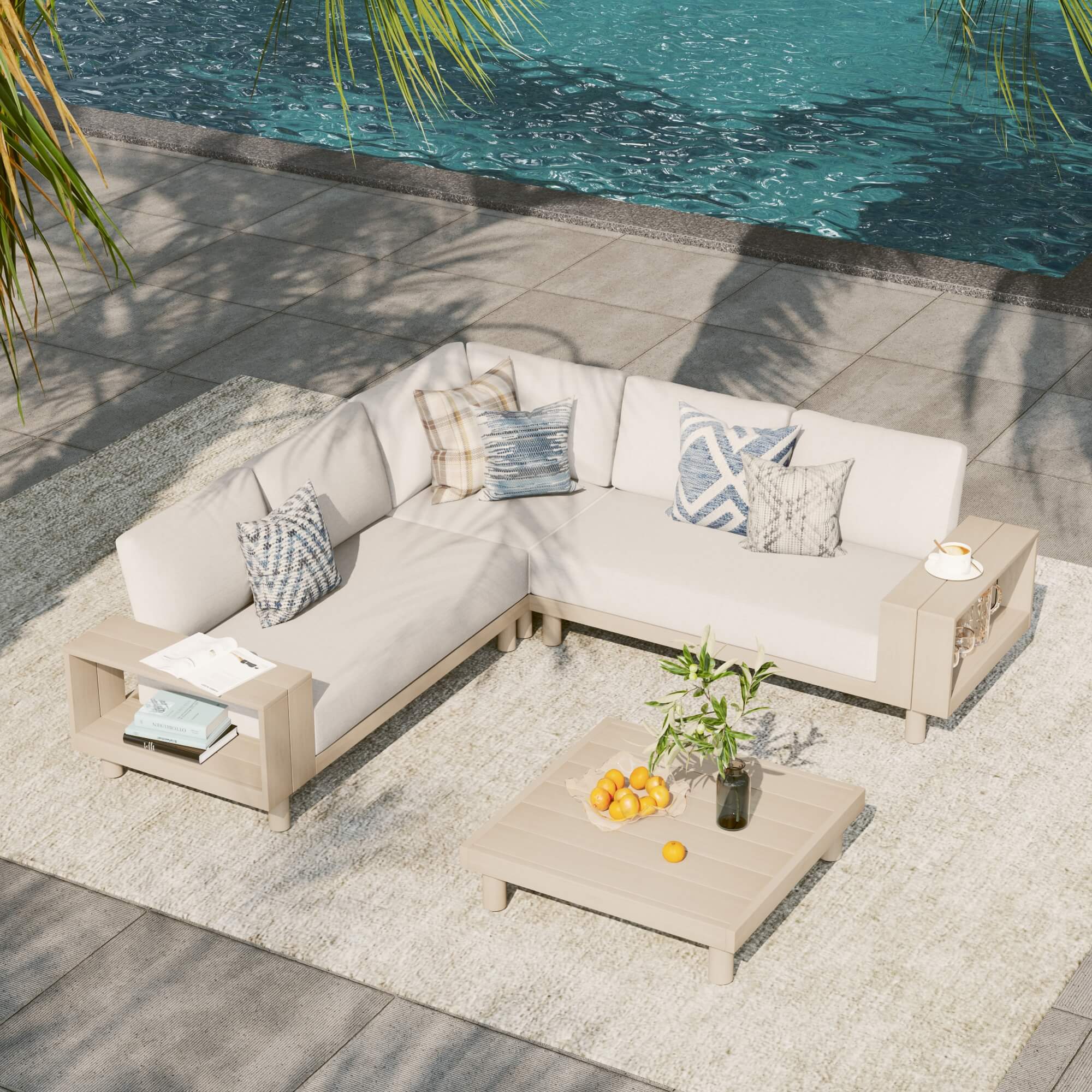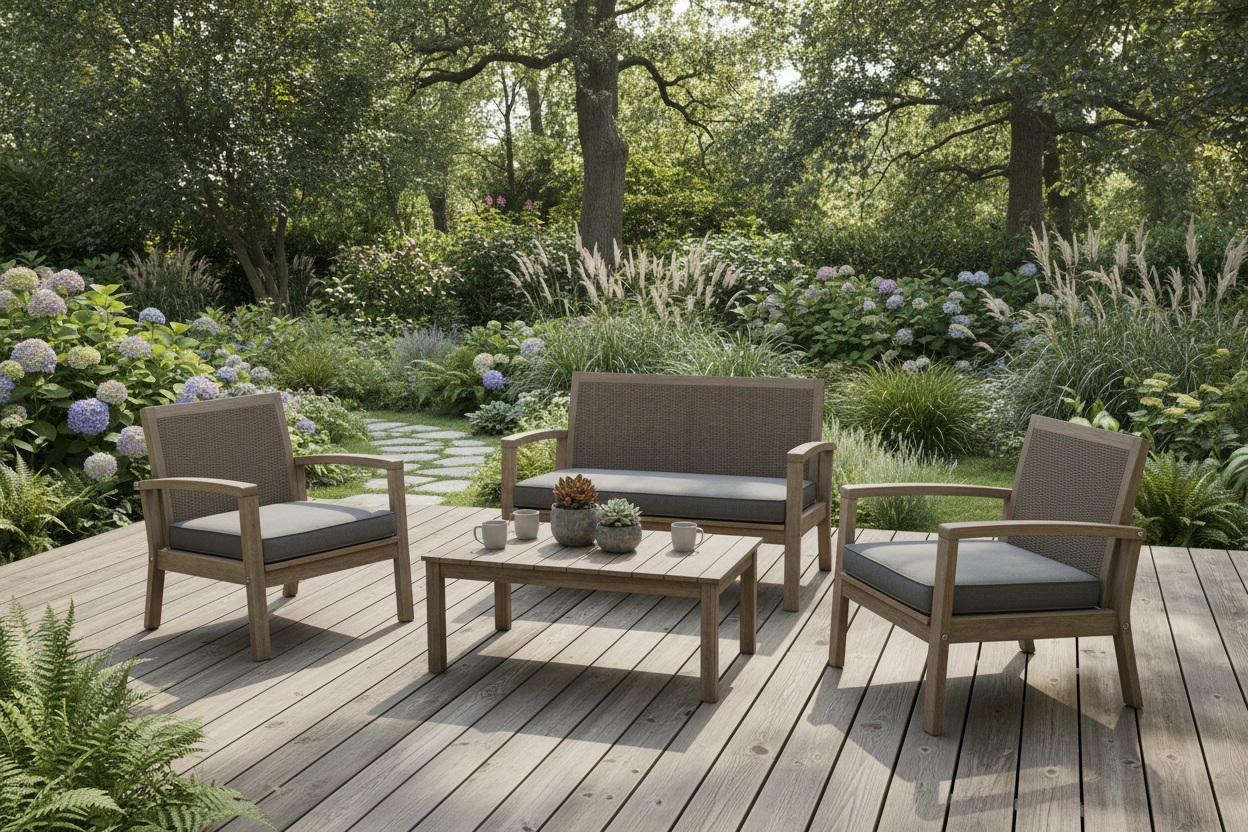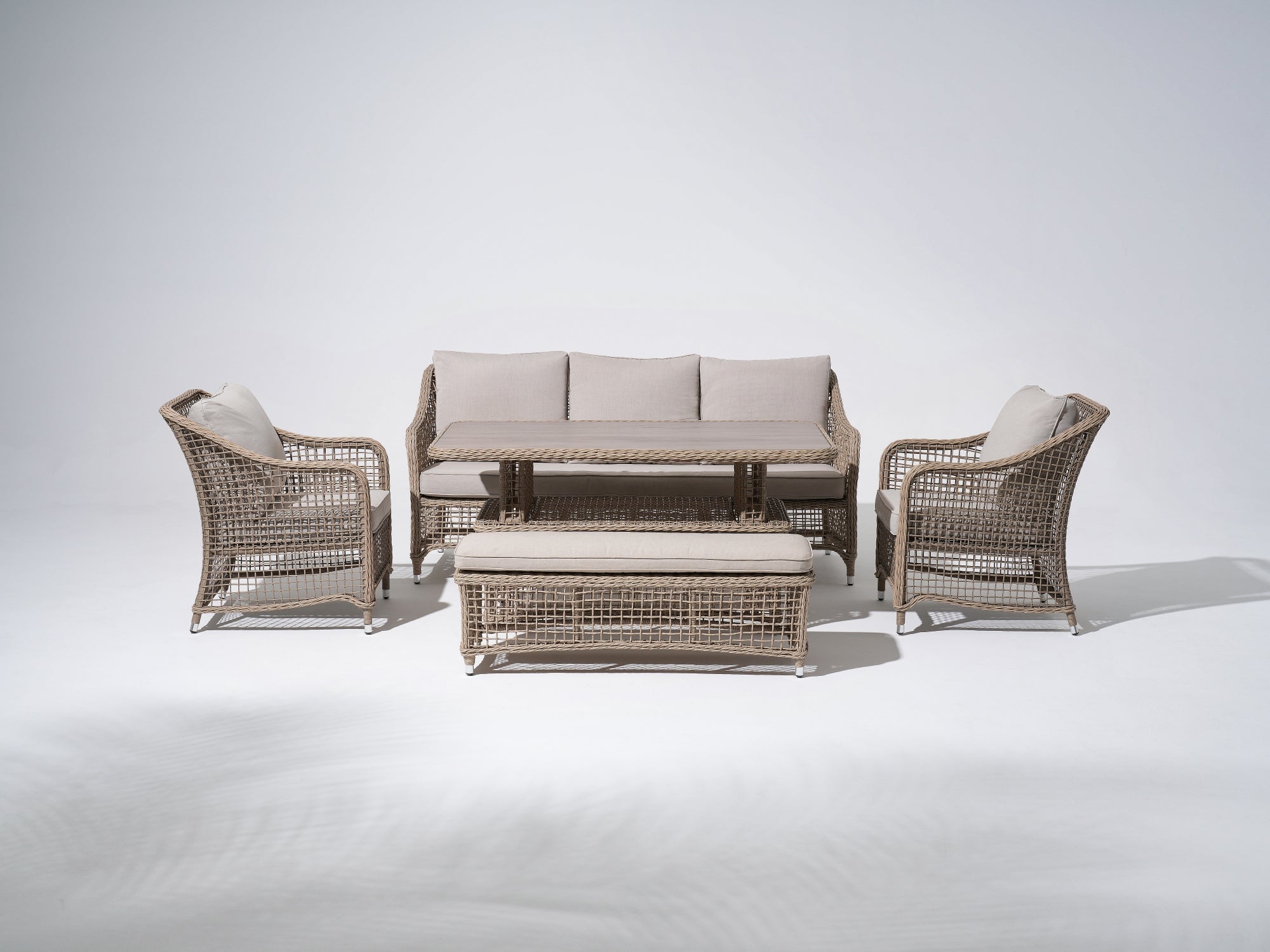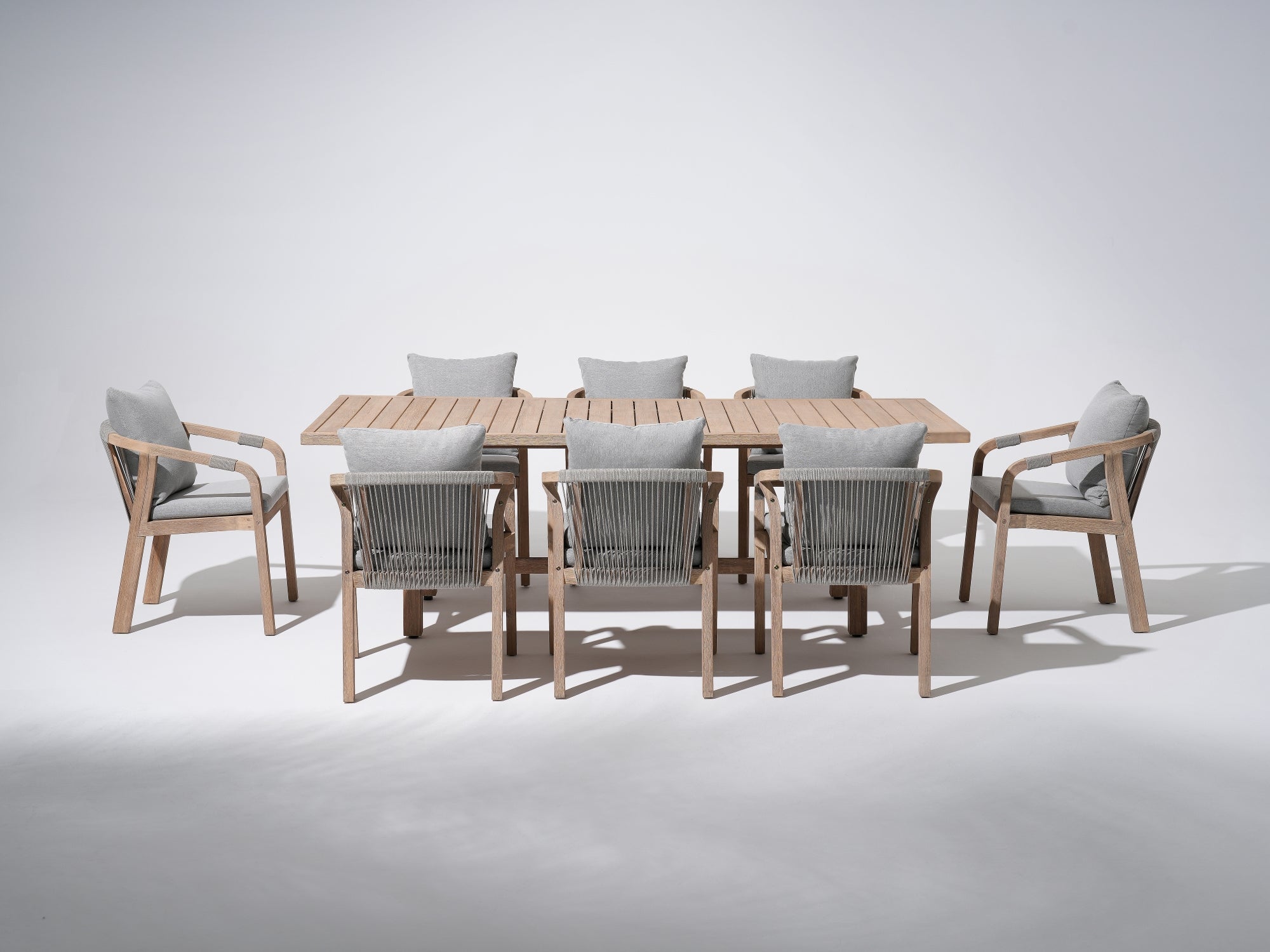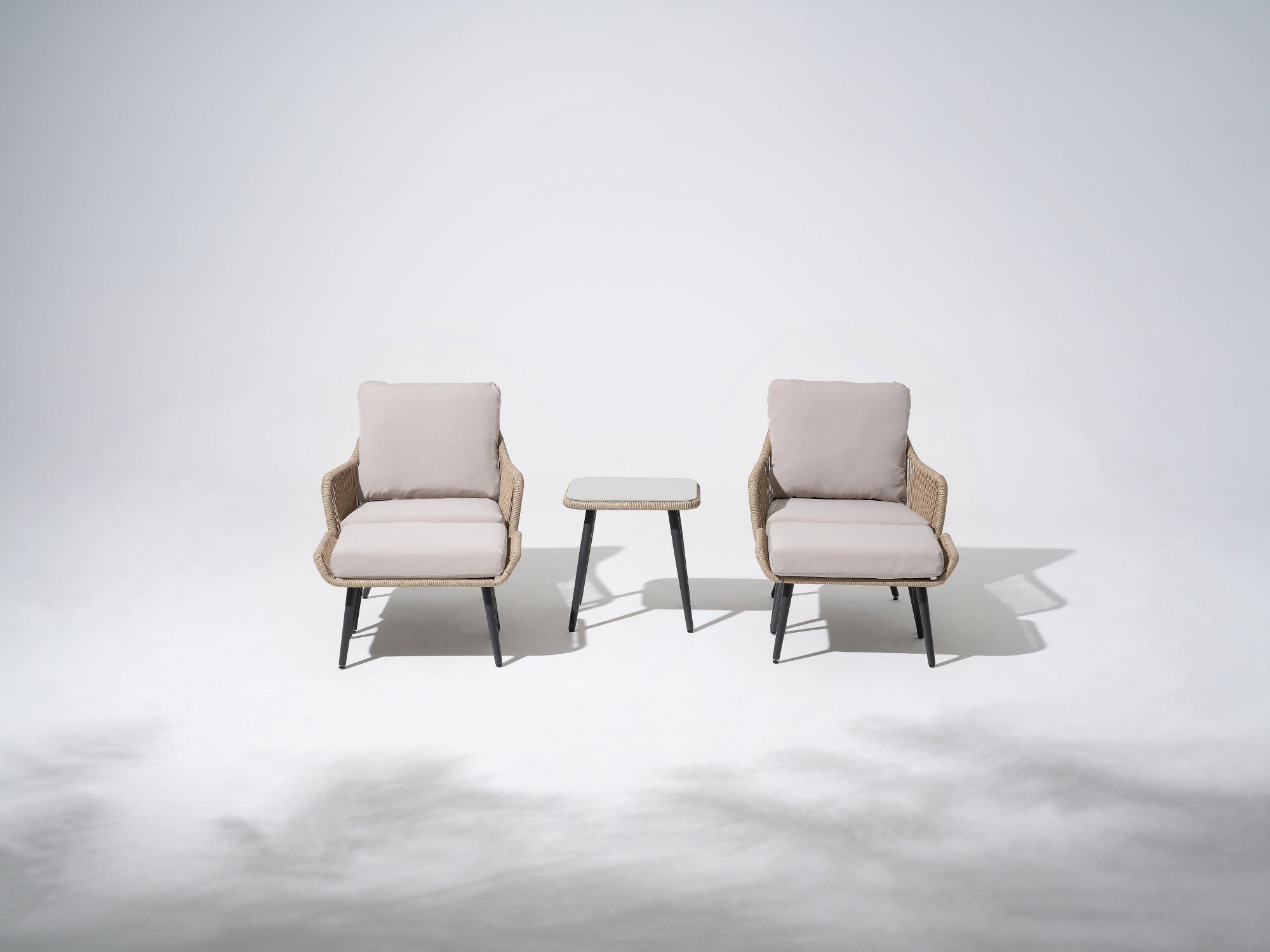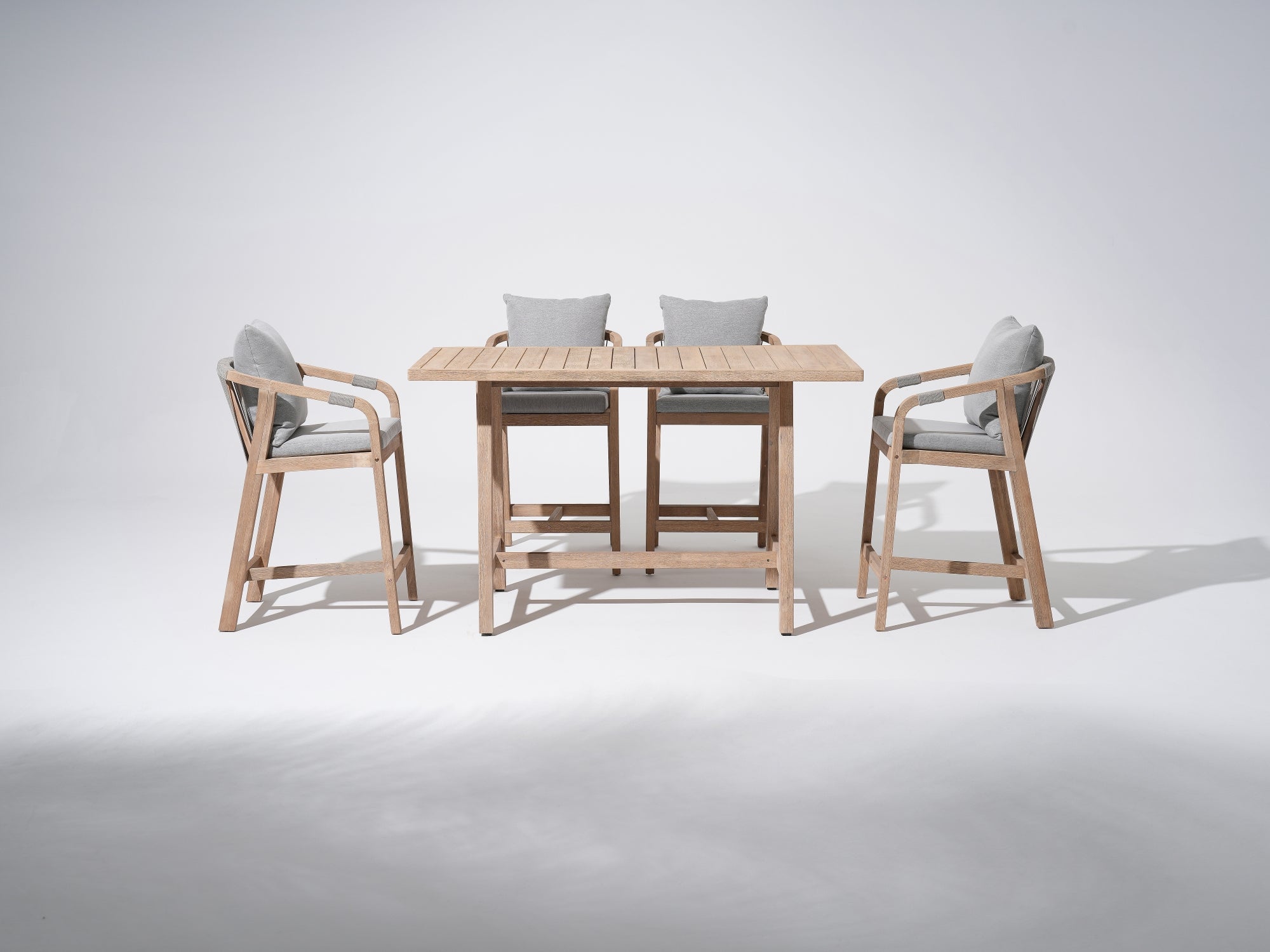Outdoor furniture adds comfort and convenience to our outdoor spaces, but without proper care, it can quickly deteriorate, losing its charm and functionality. Here’s a seasonal guide to help you keep your outdoor furniture in top condition all year round.

Spring Care
1. Cleaning and Dusting
After a winter of being idle, your outdoor furniture may gather dust and debris. Start by using a soft brush to gently remove surface dust. Follow this with a damp cloth to wipe off stubborn stains.
- For wooden furniture: Avoid using overly wet cloths to prevent moisture damage.
- For metal furniture: Use a clean, damp cloth, then dry thoroughly to prevent rust.
2. Inspection and Repairs
Spring is the perfect time to inspect for loose parts, damage, or deformation.
- For wooden furniture: Use wood glue to fix small cracks.
- For metal furniture: Sand down scratches and apply rust-resistant paint.

Summer Care
1. Sun Protection
Strong sunlight can cause fading and aging. Use umbrellas, canopies, or move your furniture to shaded areas to avoid prolonged exposure.
2. Rain Protection
Summer often brings rain. Prolonged exposure to moisture can lead to mold, rust, or rot.
- Move furniture indoors or under covered areas before it rains.
- If caught in the rain, dry furniture promptly with a cloth and air it out in a well-ventilated space.
3. Regular Cleaning
Humidity and heat create a breeding ground for bacteria and mold. Clean your furniture weekly with mild detergent and water.
- For wicker furniture: Use a damp cloth, then dry immediately to prevent brittleness.

Autumn Care
1. Cleaning and Storing
As the weather cools, the usage of outdoor furniture decreases. Clean thoroughly before storing.
- Use cleaning solutions to remove dirt and grime.
- Cover larger pieces, like sofas and tables, with furniture covers to protect against dust.
2. Wooden Furniture Maintenance
Autumn’s dry air can cause wooden furniture to crack. Apply wood oils, such as olive or walnut oil, to retain moisture and prevent cracking. Avoid placing wooden furniture near heaters or vents.
3. Metal Furniture Check
Inspect for rust or corrosion. Sand down rusty spots and apply rust-resistant paint. Avoid harsh chemical cleaners for aluminum furniture to prevent surface damage.

Winter Care
1. Cold Protection
Winter’s low temperatures can damage outdoor furniture.
- For wooden furniture: Apply anti-freeze varnish to protect against cold damage.
-
For metal furniture: Wrap with insulation materials to prevent frost damage.
If possible, store furniture indoors during winter months.
2. Regular Inspections
Check furniture periodically for cracks, rust, or deformation. Place supports like blocks or mats underneath furniture to prevent moisture from seeping in from the ground.
Tips for Prolonging Furniture Lifespan
- Regular cleaning and maintenance.
- Use protective covers or store when not in use.
- Avoid direct sunlight, rain, and collisions.
By following these seasonal care tips, your outdoor furniture will remain a comfortable and beautiful addition to your outdoor living space for years to come.
FAQs:
Q: How often should I clean my outdoor furniture?
A: Weekly cleaning is ideal, with increased frequency in dusty or high-use environments.
Q: What should I do if wooden furniture cracks?
A: Use wood glue for minor cracks or fill larger gaps with wood strips before applying glue.
Q: How can I address rust on metal furniture?
A: Sand the rusted area, clean thoroughly, and apply rust-resistant paint.
Q: How should I care for wicker furniture?
A: Wipe with a damp cloth, dry immediately, and avoid direct sunlight to prevent drying and cracking.
Q: How do I clean outdoor furniture cushions?
A: Remove and machine wash if possible. If not, clean with a damp cloth and air dry.
Q: How can I prevent termite damage?
A: Sprinkle termite repellents around your furniture and schedule professional inspections regularly.
Q: How do I clean a glass tabletop?
A: Wipe with a clean damp cloth and avoid abrasive cleaners or tools to prevent scratches.


